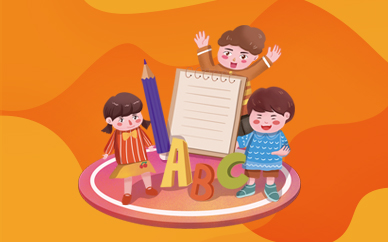今日视点:保存象棋棋盘信息,需要多少比特?我只用139-167位二进制
如何存储当前棋局
方案有3种:
象棋一共32个棋子,每个棋子有91种状态:死亡或位于0-89中任一位置。所以用长度为32的列表即可,每个数的值域是0-90,其中90代表死亡。死亡的棋子不再占用空间,使用类似map的结构,key是棋子id,value是棋子位置(0-89)。压缩空间的方案:将帅个子有9个可能在的位置,只需要0-9即可表示,需要至多5位二进制。士有5种位置,每个士只需要至多3位二进制。以此类推……占用空间最少。分析方案一:数组长度为32,每个数组项目是个uint8,总共8 * 32 = 256 位。
分析方案二:在棋子多的时候,占用空间较多,所以存储空间的大小不太稳定。
 (资料图片)
(资料图片)
方案三占用空间少,但是开发成本也较高,需要开发者去拼接二进制位。
今天我们探讨方案三。
前缀码
引入一个概念:Prefix-Free Code,也可以叫 Prefix Code,它来源于信息论学科,维基百科:en.wikipedia.org/wiki/Prefix… 描述如下:
A prefix codeis a type of code system distinguished by its possession of the "prefix property", which requires that there is no whole code word in the system that is a prefix (initial segment) of any other code word in the system. It is trivially true for fixed-length code, so only a point of consideration in variable-length code.
For example, a code with code words {9, 55} has the prefix property; a code consisting of {9, 5, 59, 55} does not, because "5" is a prefix of "59" and also of "55". A prefix code is a uniquely decodable code: given a complete and accurate sequence, a receiver can identify each word without requiring a special marker between words. However, there are uniquely decodable codes that are not prefix codes; for instance, the reverse of a prefix code is still uniquely decodable (it is a suffix code), but it is not necessarily a prefix code.
它举了个例子,针对集合{9, 5, 59, 55}就不是 prefix code,因为「5」有二义性,遇到5后,不知道该结束流程,还是继续读取后面的9或5。
哈夫曼编码 Huffman Coding
信息论中有个经典问题:给定一篇文章,如何用最短的二进制编码它。
解决方案就是:找出出现的所有单词集合(例如:I am good good good,出现了3个单词),计算每个单词出现频率,以某种方式,构造每个单词对应的二进制编码,满足条件:基于前缀就能知道它代表哪个单词。然后我们把这些前缀拼在一起,就成功编码了(并且是可以解码的)。
例如这种编码 good = 0, I = 10, am = 11,文章就表示为1011000。
这是最简短的编码了。构造方法就是通过构造一颗哈夫曼树,算法如下:
针对每一个单词(或组合),都有一个对应的频数,作为频数表。如果当前只有1个,就进入4,否则进入2。找到频数最低的2个,作为表示一个组合,他们对应的频数就是两个单词(或组合)的频数之和,加入频数表(同时删除这2个单词或组合各自的频数)。选取的2个单词(或组合),分别作为左子树和右子树,组成一个树。进入1。现在得到了一个二叉树(叫做哈夫曼树),每个叶子结点代表一个单词。规定左分叉为0,右分叉为1,这个单词对应的Prefix Code就是根节点到它的路径。例如上述编码对应的哈夫曼树就是:
对于象棋的启发
回到象棋棋盘状态的问题:
将帅有10个位置(包括死亡状态)。士有6个位置(包括死亡状态)。象有8个位置(包括死亡状态)。马有91个位置(包括死亡状态)。车有91个位置(包括死亡状态)。炮有91个位置(包括死亡状态)。兵有48个位置(包括死亡状态)。不妨假设他们出现在各个位置的频率都一致,不难构造出对应的编码。(这样的编码是比较稳定的,无论棋局变成什么样子,存储占用空间都不会太大)
10个位置,需要3-4位。6个位置,需要2-3位。8个位置,需要3位。48个位置,需要4-5位。91个位置,需要6-7位。这样算下来,保存一个象棋的棋子位置信息,最少需要:
(3+2*2+3*2+6*6+4*5)*2=138位,再用1位保存该谁下棋了,总共至少需要139位。至多需要(4+3*2+3*2+7*6+5*5)*2=166位,再用1位保存该谁下棋了,总共至多需要167位。
有办法实现吗?
上面说的很理想,如何实现呢?
我们以10个位置的情况,来探讨通用的编码生成方法。首先根据哈夫曼树,可以构造这样的编码:
000代表0001代表1010代表2011代表3100代表4101代表51100代表61110代表71101代表81111代表9随后容易发现这样的规律:
至于0-5,用3位二进制编码即可。至于6-7,我们需要在3位的6(110)和7(111)末尾新增0。至于8-9我们需要在3位的6和7末尾新增1。可以利用数学归纳法,归纳总结出这样的算法:
针对X个位置的情况,计算Log2(X),分别向下取整和向上取整,得到A和B。如果A=B,则用A位二进制表示这X个数即可,直接转换进制。如果A2^A-1-(X-2^A);用B位二进制表示其它位置;针对位置2^A-(X-2^A)至2^A-1,编码为A位的进制转换,并在末尾拼接一位0(共计B位);针对其它位置,编码为位置减去(X-2^A)再转换二进制,并在末尾拼接一位1(共计B位)。可以发现,这种算法,位置编号小的比位置编号大的少了一位。也就是说,我们应该尽量把出现频率较高的位置放在前面。
生成各棋子的位置列表
const RedAllCandidates = new Array(90).fill(0).map((a, i) => 89 - i);const BlackAllCandidates = new Array(90).fill(0).map((a, i) => i);const RedSoliderCandidates = new Array(45).fill(0).map((a, i) => 44 - i);const BlackSoliderCandidates = new Array(45).fill(0).map((a, i) => 45 + i);// 分别是将、士、士、……const PieceCandidates = [ [85, 86, 84, 76, 77, 75, 67, 68, 66, 127], [127, 86, 84, 76, 68, 66], [127, 84, 86, 76, 66, 68], [127, 87, 67, 71, 51, 83, 47, 63], [127, 83, 67, 63, 47, 87, 51, 71], [127, ...RedAllCandidates], [127, ...RedAllCandidates], [127, ...RedAllCandidates], [127, ...RedAllCandidates], [127, ...RedAllCandidates], [127, ...RedAllCandidates], [127, 62, 53, ...RedSoliderCandidates], [127, 60, 51, ...RedSoliderCandidates], [127, 58, 49, ...RedSoliderCandidates], [127, 56, 47, ...RedSoliderCandidates], [127, 54, 45, ...RedSoliderCandidates], [4, 3, 5, 13, 12, 14, 22, 21, 23, 127], [127, 3, 5, 13, 21, 23], [127, 5, 3, 13, 23, 21], [127, 2, 22, 18, 38, 6, 42, 26], [127, 6, 22, 26, 42, 2, 38, 18], [127, ...BlackAllCandidates], [127, ...BlackAllCandidates], [127, ...BlackAllCandidates], [127, ...BlackAllCandidates], [127, ...BlackAllCandidates], [127, ...BlackAllCandidates], [127, 27, 36, ...BlackSoliderCandidates], [127, 29, 38, ...BlackSoliderCandidates], [127, 31, 40, ...BlackSoliderCandidates], [127, 33, 42, ...BlackSoliderCandidates], [127, 35, 44, ...BlackSoliderCandidates],];解释:
我可以把将帅的「死亡」(127)调整到了最后一位,因为他们死亡是非常罕见的,这样可以节约2bit空间。我刻意把棋子常见位置放在了数组前几位,尤其是将帅、士、兵,这样可以节约几bit空间。兵的位置,红色和黑色不同,刚过河的一排放在前面,离河远的位置放在后面,可以节约几bit空间。提前计算log
为了提高效率,我应该避免在JS中计算Math.log2,而要提前定义好运算结果。
const ceilLog2Map = new Map([ [1, 0], [2, 1], [3, 2], [4, 2], [6, 3], [8, 3], [10, 4], [17, 5], [48, 6], [91, 7],]);const floorLog2Map = new Map([ [1, 0], [2, 1], [3, 1], [4, 2], [6, 2], [8, 3], [10, 3], [17, 4], [48, 5], [91, 6],]);按照编码规则encode
基于文章《JS 按自定义格式 拼接二进制串 解析二进制串》提到的concatBits函数,我写了concatFlexibleBits函数:
function concatFlexibleBits(current: number, offset: number, candidateIndex: number, candidateLength: number): [number, number, number[]] { const floorLog = floorLog2Map.get(candidateLength)!; const ceilLog = ceilLog2Map.get(candidateLength)!; const last = 2 ** floorLog; const beyond = candidateLength - last; if (floorLog === ceilLog || candidateIndex < last - beyond) { return concatBits(current, offset, candidateIndex, floorLog); } let newCurrent = current; let newOffset = offset; const array: number[] = []; let newUint8: number[]; if (candidateIndex < last) { [newCurrent, newOffset, newUint8] = concatBits(newCurrent, newOffset, candidateIndex, floorLog); array.push(...newUint8); [newCurrent, newOffset, newUint8] = concatBits(newCurrent, newOffset, 0, 1); array.push(...newUint8); } else { [newCurrent, newOffset, newUint8] = concatBits(newCurrent, newOffset, candidateIndex - beyond, floorLog); array.push(...newUint8); [newCurrent, newOffset, newUint8] = concatBits(newCurrent, newOffset, 1, 1); array.push(...newUint8); } return [newCurrent, newOffset, array];}这里encode规则,就是按照上面提到的算法实现的。不过多解释了。
按照编码规则decode
基于文章《JS 按自定义格式 拼接二进制串 解析二进制串》的readBits函数,我写了readFlexibleBits函数:
function readFlexibleBits(array: Uint8Array, bitsOffset: number, candidateLength: number) { const floorLog = floorLog2Map.get(candidateLength)!; const ceilLog = ceilLog2Map.get(candidateLength)!; const last = 2 ** floorLog; const beyond = candidateLength - last; const [number, offset] = readBits(array, bitsOffset, floorLog); if (floorLog === ceilLog || number < last - beyond) { return [number, offset]; } const [current, offset2] = readBits(array, offset, 1); if (current) { return [number + beyond, offset2]; } return [number, offset2];}这里decode规则,是按照上面算法解析的。先读取floorLog位,如果总位置数就是2的次方,则结束。如果读取到的数比较小,也结束。如果读取到的数超过某个临界值,就需要多读取一位,决定它代表谁。
结论
方案三可以实现,并且比方案一节约了35%-45%的空间。
关于性能:编码、解码逻辑全都位于用户浏览器中执行,对服务器无影响,浏览器也会在人感知不到的耗时内运算完。
有什么用?
我在开发《象棋》时,期望通过URL来分享棋局。我希望分享的URL能永久有效,而且不喜欢给服务器太多债务(不采用token+数据库存储棋盘信息)。那么URL中必须包含完整的棋盘信息。
如果把棋盘信息存到URL中,那么URL越短,越好。
例如:game.hullqin.cn/xq?p=gSQCL5P5oIDhCFJCIBJ4eQCAkX8&r=86pU6-4nbSh38OCojLarcupWOb1rXw&s=1 ,点开后就能立马展现某场对局。
这个URL里,保存了棋盘所有棋子信息、所有历史记录(10个回合即20步)。方便大家保存、分享。
保存历史记录,也是通过类似的手段实现的,占用空间非常小(长度两百的字符串,足够存储大部分常规对局的历史记录)。
欢迎观看 【可以「旋转棋盘」的联机象棋】 - 哔哩哔哩
写在最后
我是HullQin,公众号线下聚会游戏的作者(欢迎关注我,交个朋友)。转发本文前需获得作者HullQin授权。我独立开发了《联机桌游合集》,是个网页,可以很方便的跟朋友联机玩UNO、飞行棋、斗地主、五子棋、一夜狼、狼人杀、象棋、德国心脏病、达芬奇密码等游戏,不收费无广告。还开发了《Dice Crush》参加Game Jam 2022。喜欢可以关注我噢~我有空了会分享做游戏的相关技术,会在这个专栏里分享:《教你做小游戏》。
X 关闭
- 今日视点:保存象棋棋盘信息,需要多少比特?我只用139-167位二进制
- “金融支持前海30条”落地成效初显 深港跨境金融服务提质升级
- 巧克力球日本人_巧克力球
- 拜仁1-3,创12年耻辱!5场仅1胜,从三线争冠成全崩盘,纳帅看笑话
- 苏能股份(600925.SH):江苏能投公司拟投建徐州泉山经济开发区全域新能源光伏项目
- 世界地球日:我国陆域国土30%以上划入生态保护红线
- 如何为丝绸插花定价|环球速看料
- 去西藏准备什么东西
- 世界实时:高档水果品种9月份_高档水果品种
- 浅咖色配什么颜色好看_深咖色配什么色
- 和政县以“大提升”助推乡村振兴 天天快资讯
- 红十字国际委员会:关塔那摩监狱囚犯身心状况迅速恶化
- install怎么安装_installous怎么用-环球新要闻
- 顺网科技:公司在AI领域较强的技术储备,可为AIGC等人工智能应用提供算力、算法、云渲染等技术服务-环球快消息
- 数读科创板IPO|爱科百发:有望开发出全球首个抗RSV药物 启明、正心谷参投
- 要闻速递:做实做细就业指导服务(教育时评)
- 吃鸡游戏(伏天吃什么好)
- 摆摊成副业No.1?在杭州,花1000元摆摊2小时收入253元 世界热讯
- 人参叶的功效与作用点_人参叶的功效与作用 天天微资讯
- 墨尔本城前锋麦克拉伦成为A联赛史上最伟大的射手
- 天天最新:吉利睿蓝7、吉利睿蓝9登场上海车展,开启新能源崛起时代
- 全球热讯:车叔试驾启辰大V DD-i超混动:时刻带电,快乐无限
- 啥信号?年内约300款产品主动提前“退场”!银行理财 还能买吗?
- 陆金所控股获评“中国金融机构金牌榜“年度最佳科技赋能金融科技公司
- 特斯拉Model Y是Q1欧洲最畅销汽车 在美国非皮卡中销量也居首|天天报资讯
- 一地通知:这些人的工资,全额用数字人民币发放!
- 一季度我国财政收入回稳向上_天天新视野
- 世乒联冠军赛澳门站:陈梦力克孙颖莎 将与王曼昱争夺女单冠军 环球看热讯
- 【环球播资讯】北京2023年义务教育入学政策发布
- 【播资讯】谢娜工作室道歉,热搜第一!
- 梨型身材的女性别乱穿衣服,夏季记住这几组公式,照着穿时髦显瘦_消息
- 车牌号选什么数字好2022(车牌号选什么数字好)
- 宝马mini最新进展,官方再次致歉:小姐姐恳请原谅!-全球新视野
- 正负值+22全场第一!保罗末节12分对飙威少:神仙球+3帽创纪录_天天热点
- 断桥残雪歌词_断桥残雪歌词介绍_消息
- 忻州:散发“招嫖小卡片”,3人被抓!|世界热点
- 欧米茄永恒奥运系列特别版321.58.44.52.51.001女表 新资讯
- 天天速看:水位下降严重,这13城被“点名”
- 省第十届残运会暨第五届特奥会举行 眉山已斩获2金3银1铜 焦点快看
- 快资讯:英语数字怎么读法?看完秒懂_关于英语数字的读法
- 德凯剧场版怪兽图鉴-热头条
- 孔繁志_微动态
- 《美生中国人》正式预告:杨紫琼饰观音 吴彦祖饰悟空|每日动态
- 天天播报:王俊凯的鸡儿_王俊凯的鸡儿勃起
- 每日快讯!中疾控:4月14日至4月20日,新发现275例本土重点关注变异株
- Flyme Auto生态扩圈进行时 探索创新“融合无界”
- 乌龟组合 林成勋_林成勋
- “中国好故事”网络国际传播精品案例评选结果公布-天天微速讯
- 环球头条:南京医药(600713):南京医药关于回购注销2021年限制性股票激励计划部分限制性股票通知债权人
- 我国全面完成生态保护红线划定工作 切实加强监管_当前独家
- 运城市气象台发布霜冻蓝色预警【Ⅳ级/一般】【2023-04-22】
- 一季度出口增长超60% “新三样”火爆折射出口结构升级_天天资讯
- 世界时讯:「定投基金哪个好」中国中车:一季度合计签订231.1亿元合同
- 梅河口策划推出“畅游梅河•拥抱春天”“五一”系列活动 天天快资讯
- 致青春电影演员表大全_致青春电影演员表
- 环球短讯!【“三抓三促”行动进行时】陇西首阳镇:中药材育苗绿色化 生态化 有机化
- 柏的组词有哪些_柏的组词
- 环球资讯:“五一”来场祈福民俗游吧!定安文笔峰军坡活动4月29日开幕
- 一公分等于多少厘米长_一公分等于多少厘米
- CBA最新消息!曝粤疆苏3家俱乐部正在寻求三方交易,胡明轩成筹码
- 过敏性鼻炎:为何折磨你,却放过他? 新动态
- 图片新闻|倾听企业发展诉求、通过法治课提升孩子们网络安全意识 世界资讯
- 中国少数民族有哪些_我国有多少个少数民族
- 邻苯二甲酸酐商品报价动态(2023-04-22)
- 环球观焦点:俄罗斯下届总统或被敲定,普京恐提前下岗,专家:中方成最大赢家
- 世界地球日 建设美丽家园我们作了这些努力→
- 天天播报:武汉理工大学获批运动训练本科专业
- 天天滚动:荠菜、蒲公英靠边站,这菜抓紧吃!鲜嫩营养,全身是宝,别不懂吃
- 2023上海车展大奖:先锋科技眼花缭乱 海外品牌概念车花落谁家?
- 全国首个,山西一高校成立剧本杀学院,配套有剧本杀店面 今日看点
- 环球聚焦:揭开商周文明的密码
- python-异常处理和错误调试-asyncio中的错误调试(三)|天天信息
- 亾亼怎么读_亾
- 债券利息跟什么有关?债券值得投资吗? 天天热文
- 苏州地铁8号线成功下穿既有4号线孙武纪念园站
- 青岛港:融资净买入123.65万元,融资余额7564.79万元(04-21)-快消息
- 今日热文:孔子杏坛讲学图
- 南特科技完成新一轮融资 消息
- 西安警方举办8辆涉案车辆集中返还仪式 总价值近200万元-天天速读
- 演变的近义词_演变_环球头条
- 全球今日讯!足以什么什么四字成语_足以
- 天天热点评!浙江省博物馆咨询电话一览
- 今日热议:方星海:中金所要积极推动国债期货对外开放 引导机构中长期资金入市
- 2023呼和浩特HotBox音乐节官方购票平台入口
- 世界看热讯:蕴怎么读音_蕴怎么读
- 台江县城关一小开展防震救灾防汛抗旱演练
- 为节省布料只穿一字裤 一键变巨的晚间囧图
- 融券量大是好事坏事|全球快看点
- 普华永道姚家仁:受利息收入增速放缓影响,2022年40家上市银行净利润增速回落
- 世界看热讯:股票行情快报:皇庭B(200056)4月21日游资资金净卖出7.26万元
- 科研人员提出环形RNA全长转录本解析技术|焦点滚动
- 【当前热闻】巨星科技2022年净利14.2亿同比增长11.78% 董事长仇建平薪酬62.57万
- 运城农机公司_运城农廉网_环球关注
- 光弘科技(300735):4月21日北向资金增持54.93万股|全球动态
- 2023贵州黔东南州镇远县事业单位急需紧缺人才引进体检结果及拟考察对象公示(第二批) 热头条
- 双面泰坦玻璃+双向卫星通讯!魅族20 INFINITY无界版手机工信部入网
- 全球快看点丨今日时讯:穆帅只想让球迷快乐球员进步 60岁穆帅罗马生涯99场场均1.80分连续2年进军欧战半决赛
- 【世界新要闻】收评:三方面原因引发大盘跳水 大盘前期高点回踩概率加大
- 南京一体育中心现天价健身器材:长椅八千健康柱二十万,涉事单位:贴的是总价-观察
- 年轻人最好的活法:消费低配,思维高配,心态顶配
Copyright © 2015-2022 华声商报网版权所有 备案号:京ICP备2021034106号-36 联系邮箱:55 16 53 8 @qq.com










